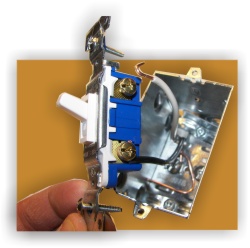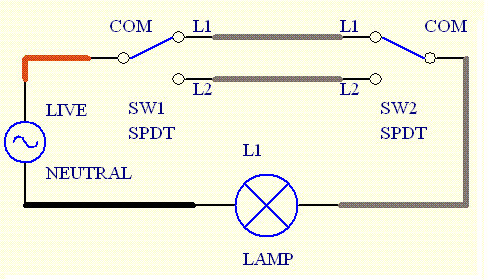T his automatic bicycle light makes cycling in the dark much easier (although you still need to pedal of course). The circuit takes the ambient light level into account and only turns on the light when it becomes dark. The light is turned off when no cycling has taken place for over a minute or if it becomes light again. The biggest advantage of this circuit is that it has no manual controls. This way you can never ‘forget’ to turn the light on or off. This makes it ideal for children and those of a forgetful disposition.
Bicycle Light Image :
To detect when the bicycle is used (in other words, when the wheels turn), the circuit uses a reed switch (S1), mounted on the frame close to the wheel. A small magnet is fixed to the spokes (similar to that used with most bicycle speedometers), which closes the reed switch once for every revolution of the wheel. Whilst the wheel turns, pulses are fed to the base of T1 via C1. This charges a small electrolytic capacitor (C2). When it is dark enough and the LDR there-fore has a high resistance, T2 starts conducting and the lamp is turned on. With every revolution of the wheel C2 is charged up again. The charge in C2 ensures that T2 keeps conducting for about a minute after the wheel stops turning. Almost any type of light can be connected to the output of the circuit.
Circuit diagram :
Automatic Bicycle Light Circuit Diagram
Part List :
ResistorsR1 = 1MΩ (SMD 0805)
R2,R4 = 100kΩ (SMD 0805)
R3,R6 = 1kΩ (SMD 0805)
R5 = LDR e.g. FW150 Conrad Electronics # 183547
CapacitorsC1 = 1µF 16V (SMD 0805)
C2 = 10µF 16V (SMD chip type)
C3 = 100nF (SMD 0805)
SemiconductorsT1 = BC807 (SMD SOT23)
T2 = STS6NF20V (SMD SO8)
MiscellaneousS1 = reed switch (not on board) +
2-way right angle pinheader
BT1 = 3–12V (see text)
With a supply voltage of 3V the quiescent current when the reed switch is open is just 0.14 μA. When the magnet happens to be in a position such that S1 is closed, the current is 3 μA. In either case there is no problem using batteries to supply the circuit. The supply voltage can be anywhere from 3 to 12 V, depending on the type of lamp that is connected. Since it is likely that the circuit will be mounted inside a bicycle light it is important to keep an eye on its dimensions. The board has therefore been kept very compact and use has been made of SMD components. Most of them come in an 0805 pack-age. C2 comes in a so called chip version. The board is single sided with the top also acting as the solder side.

The print outline for the LDR (R5) isn’t exactly the same as that of the outline of the LDR mentioned in the component list. The outline is more a general one because there is quite a variety of different LDR packages on the market. It is therefore possible to use another type of LDR, if for example the light threshold isn’t quite right. The LDR may also be mounted on the other side of the board, but that depends on how the board is mounted inside the light. For the MOSFET there are also many alternatives available, such as the FDS6064N3 made by Fairchild , the SI4864 DY made by Vishay Siliconix , the IR F74 0 4 made by IR F or the NTMS 4N01R 2G made by ONSEMI. The reed switch also comes in many different shapes and sizes; some of them are even waterproof and come with the wires already attached.
For the supply connection and the connection to the lamp you can either use PCB pins or solder the wires directly onto the board. The soldered ends of the pins can be shortened slightly so that they don’t stick out from the bottom of the board. This reduces the chance of shorts with any metal parts of the light. Do take care when you use a dynamo to power the circuit the alternating voltage must first be rectified! The same applies to hub dynamos, which often also output an alternating voltage.
Please Note. Bicycle lighting is subject to legal restrictions, traffic laws and, additionally in some countries, type approval.
Download : 090102-1 PCB layout (.pdf), from www.elektor.com
Author : Ludwig Libertin (Austria) – Copyright : Elektor































 12V Low side PWM Motor/Light Controller
12V Low side PWM Motor/Light Controller 12V High side PWM Motor/Light Controller
12V High side PWM Motor/Light Controller

